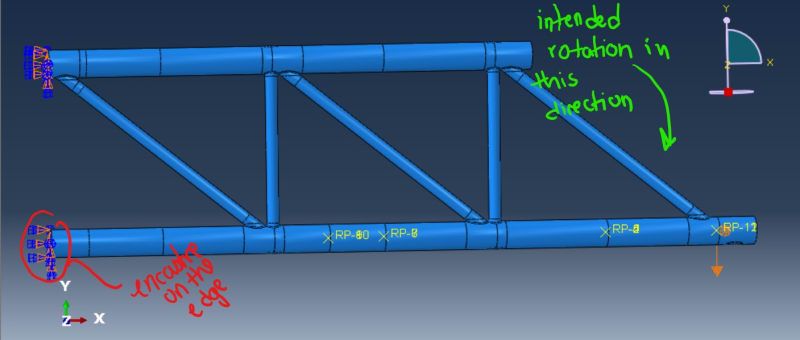SofiaB
Civil/Environmental
- Jul 9, 2020
- 27
Hello everyone,
So I have a CHS truss that is encastrated in the ending edges and this is defined in the initial step. But in the next step, where I apply a vertical load, I wanted to allow that boundary condition to rotate( I will leave a picture for a better understanding of the movement I want) to simulate a badly encastrated support(where the connecting bolts weren't well "fixed"). Should I deactivate the encastre in the load step and apply a displacement boundary condition there? Or define a different type of condition in the initial step? Should I apply a small rotation in the load step?
What do you think is the best way to approach this?
Thank you so much in advance for all the help.

So I have a CHS truss that is encastrated in the ending edges and this is defined in the initial step. But in the next step, where I apply a vertical load, I wanted to allow that boundary condition to rotate( I will leave a picture for a better understanding of the movement I want) to simulate a badly encastrated support(where the connecting bolts weren't well "fixed"). Should I deactivate the encastre in the load step and apply a displacement boundary condition there? Or define a different type of condition in the initial step? Should I apply a small rotation in the load step?
What do you think is the best way to approach this?
Thank you so much in advance for all the help.

